The Impact of Urbanization on Cultivated Land Use Efficiency in the Yangtze River Economic Belt in China
Abstract
1. Introduction
2. Methodology
2.1. Study Area
2.2. Variable and Data Source
2.3. Spatial Econometric Model
2.4. SBM-Undesirable Model
2.5. Data Analysis
3. Results
3.1. Spatial Correlation Analysis
3.2. Spatial Feature Analysis
3.3. Spatial Regression
3.4. Spatial Heterogeneity Analysis
4. Discussion
5. Conclusions
Author Contributions
Funding
Institutional Review Board Statement
Data Availability Statement
Acknowledgments
Conflicts of Interest
References
- De Brauw, A.; Huang, J.; Rozelle, S. The sequencing of reform policies in China’s agricultural transition. Econ. Transit. 2004, 12, 427–465. [Google Scholar] [CrossRef]
- Rithmire, M.E. Land institutions and Chinese political economy. Polit. Soc. 2017, 45, 123–153. [Google Scholar] [CrossRef]
- Zhao, Z.; Bai, Y.; Wang, G.; Chen, J.; Yu, J.; Liu, W. Land eco-efficiency for new-type urbanization in the Beijing-Tianjin-Hebei Region. Technol. Forecast. Soc. Chang. 2018, 137, 19–26. [Google Scholar] [CrossRef]
- Duro, J.A.; Lauk, C.; Kastner, T.; Erb, K.H.; Haberl, H. Global inequalities in food consumption, cropland demand and land-use efficiency: A decomposition analysis. Glob. Environ. Chang. 2020, 64, 102124. [Google Scholar] [CrossRef]
- Haroon, S.; Mohd, I. Impact of urbanization on land use/land cover of Dudhganga watershed of Kashmir Valley, India. Int. J. Urban Sci. 2012, 16, 321–339. [Google Scholar]
- Sumari, S.N.; Cobbinah, P.B.; Ujoh, F.; Xu, G. On the absurdity of rapid urbanization: Spatio-temporal analysis of land-use changes in Morogoro, Tanzania. Cities 2020, 107, 102876. [Google Scholar] [CrossRef]
- Deng, X.; Huang, J.; Rozelle, S.; Zhang, J.; Li, Z. Impact of urbanization on cultivated land changes in China. Land Use Policy 2015, 45, 1–7. [Google Scholar] [CrossRef]
- Zhu, Z.; Duan, J.; Li, R.; Feng, Y. Spatial evolution, driving mechanism, and patch prediction of grain-producing cultivated land in China. Agriculture 2022, 12, 860. [Google Scholar] [CrossRef]
- Lai, Z.; Chen, M.; Liu, T. Changes in and prospects for cultivated land use since the reform and opening up in China. Land Use Policy 2020, 97, 104781. [Google Scholar] [CrossRef]
- Zanten, H.H.E.; Mollenhorst, H.; Klootwijk, C.W. Global food supply: Land use efficiency of livestock systems. Int. J. Life Cycle Assess. 2016, 21, 747–758. [Google Scholar] [CrossRef]
- Spalding, A.K. Exploring the evolution of land tenure and land use change in Panama: Linking land policy with development outcomes. Land Use Policy 2017, 61, 543–552. [Google Scholar] [CrossRef]
- Mertz, O.; Merens, C.F. Land sparing and land sharing policies in developing countries drivers and linkages to scientific debates. World Dev. 2017, 98, 523–535. [Google Scholar] [CrossRef]
- Han, H.; Zhang, X. Exploring environmental efficiency and total factor productivity of cultivated land use in China. Sci. Total Environ. 2020, 726, 138434. [Google Scholar] [CrossRef] [PubMed]
- Talukdar, S.; Naikoo, M.W.; Mallick, J.; Praveen, B. Coupling geographic information system integrated fuzzy logic-analytical hierarchy process with global and machine learning based sensitivity analysis for agricultural suitability mapping. Agric. Syst. 2022, 196, 103343. [Google Scholar] [CrossRef]
- Zhou, X.; Wu, D.; Li, J.; Liang, J. Cultivated land use efficiency and its driving factors in the Yellow River Basin, China. Ecol. Indic. 2022, 144, 109411. [Google Scholar] [CrossRef]
- Challenges and Solutions to the High-Quality Development of the Yangtze River Economic Belt. Available online: http://nads.ruc.edu.cn/upfile/file/20191025091346_108605_92177.pdf (accessed on 25 October 2019).
- Wu, C.; Wei, Y.D.; Huang, X. Economic transition, spatial development and urban land use efficiency in the Yangtze River Delta, China. Habitat Int. 2017, 63, 67–78. [Google Scholar] [CrossRef]
- Kuang, B.; Lu, X.; Zhou, M. Provincial cultivated land use efficiency in China: Empirical analysis based on the SBM-DEA model with Carbon emissions considered. Technol. Forecast.Soc. Chang. 2020, 151, 119874. [Google Scholar] [CrossRef]
- Han, H.; Zhang, X. Static and dynamic cultivated land use efficiency in China: A minimum distance to strong efficient frontier approach. J. Clean. Prod. 2020, 246, 119002. [Google Scholar] [CrossRef]
- Herzig, A.; Nguyen, T.T.; Ausseil, A.G.E.; Maharjan, G.R.; Dymond, J.R. Assessing resource-use efficiency of land use. Environ. Model. Softw. 2018, 107, 34–49. [Google Scholar] [CrossRef]
- Masini, E.; Tomao, A.; Barbati, A. Urban Growth, Land-use Efficiency and Local Socioeconomic Context: A Comparative Analysis of 417 Metropolitan Regions in Europe. Environ. Manag. 2019, 63, 322–337. [Google Scholar] [CrossRef]
- Fei, R.; Lin, Z.; Chunga, J. How land transfer affects agricultural land use efficiency: Evidence from China’s agricultural sector. Land Use Policy 2021, 103, 105300. [Google Scholar] [CrossRef]
- Guo, S.; Hu, Z.; Ma, H.; Xu, D.; He, R. Spatial and temporal variations in the ecological efficiency and ecosystem service value of agricultural land in China. Agriculture 2022, 12, 803. [Google Scholar] [CrossRef]
- Xie, H.; Huang, Y.; Choi, Y.; Shi, J. Evaluating the sustainable intensification of cultivated land use based on emergy analysis. Technol. Forecast.Soc Chang. 2021, 165, 120449. [Google Scholar] [CrossRef]
- Lu, X.; Qu, Y.; Sun, P. Green transition of cultivated land use in the Yellow River Basin: A perspective of green utilization efficiency evaluation. Land 2020, 9, 475. [Google Scholar] [CrossRef]
- Yang, B.; Wang, Z.; Zou, L.; Zou, L.; Zhang, H. Exploring the eco-efficiency of cultivated land utilization and its influencing factors in China’s Yangtze River Economic Belt, 2001–2018. J. Environ. Manag. 2021, 294, 112939. [Google Scholar] [CrossRef]
- Lin, G.C.S.; Ho, S.P.S. China’s land resources and land-use change: Insights from the 1996 land survey. Land Use Policy 2003, 20, 87–107. [Google Scholar] [CrossRef]
- Skog, K.L.; Steinnes, M. How Do centrality, population growth and urban sprawl impact farmland conversion in Norway? Land Use Policy 2016, 59, 185–196. [Google Scholar] [CrossRef]
- Amour, C.B.; Reitsma, F.; Baiocchi, G.; Barthel, S.; Güneralp, B.; Erb, K.H.; Haberl, H.; Creutzig, F.; Seto, K.C. Future urban land expansion and implications for global croplands. Proc. Nati. Acad. Sci. USA 2017, 114, 8939–8944. [Google Scholar]
- Yang, Q.; Gao, Y.; Yang, X.; Zhang, J. Rural transformation driven by households’ adaptation to climate, policy, market, and urbanization: Perspectives from livelihoods–land use on Chinese Loess Plateau. Agriculture 2022, 12, 1111. [Google Scholar] [CrossRef]
- Tian, L.; Ge, B.; Li, Y. Impacts of state-led and bottom-up urbanization on land use change in the peri-urban areas of Shanghai: Planned growth or uncontrolled sprawl? Cities 2017, 60, 476–486. [Google Scholar] [CrossRef]
- Li, W.; Wang, D.; Liu, S.; Zhu, Y. Measuring urbanization-occupation and internal conversion of peri-urban cultivated land to determine changes in the peri-urban agriculture of the black soil region. Ecol. Indic. 2019, 102, 328–337. [Google Scholar] [CrossRef]
- Hou, X.; Liu, J.; Zhang, D.; Zhao, M.; Xia, C. Impact of urbanization on the eco-efficiency of cultivated land utilization: A case study on the Yangtze River Economic Belt, China. J. Clean. Prod. 2019, 238, 117916. [Google Scholar] [CrossRef]
- Huang, J.; Zhu, L.; Deng, X.; Rozelle, S. Cultivated land changes in China: The impacts of urbanization and industrialization. In Proceedings of the Remote Sensing and Modeling of Ecosystems for Sustainability II, San Diego, CA, USA, 31 July–4 August 2005; p. 58840I. [Google Scholar]
- Li, Y.; Li, Y.; Westlund, H.; Liu, Y. Urban–rural transformation in relation to cultivated land conversion in China: Implications for optimizing land use and balanced regional development. Land Use Policy 2015, 47, 218–224. [Google Scholar]
- Koroso, N.H.; Lengoiboni, M.; Zevenbergen, J.A. Urbanization and urban land use efficiency: Evidence from regional and Addis Ababa satellite cities, Ethiopia. Habitat Int. 2021, 117, 102437. [Google Scholar] [CrossRef]
- Yang, L.; Han, B.; Ma, Z.; Wang, T.; Lin, Y. Analysis of the urban land use efficiency in the New-Type Urbanization process of China’s Yangtze River Economic Belt. Int. J. Environ. Res. Public Health 2022, 19, 8183. [Google Scholar] [CrossRef]
- Koroso, N.H.; Zevenbergen, J.A.; Lengoiboni, M. Urban land use efficiency in Ethiopia: An assessment of urban land use sustainability in Addis Ababa. Land Use Policy 2020, 99, 105081. [Google Scholar] [CrossRef]
- Wang, J.; Lin, Y.; Glendinning, A.; Xu, Y. Land-use changes and land policies evolution in China’s urbanization processes. Land Use Policy 2018, 75, 375–387. [Google Scholar] [CrossRef]
- Liu, J.; Dong, C.; Liu, S.; Rahman, S.; Sriboonchitta, S. Sources of total-factor productivity and efficiency changes in China’s agriculture. Agriculture 2020, 10, 279. [Google Scholar] [CrossRef]
- Zhao, J.; Zhu, D.; Cheng, J.; Jiang, X.; Lun, F.; Zhang, Q. Does regional economic integration promote urban land use efficiency? Evidence from the Yangtze River Delta, China. Habitat Int. 2021, 116, 102404. [Google Scholar] [CrossRef]
- Zhang, M.; Sun, X.; Wang, W. Study on the effect of environmental regulations and industrial structure on haze pollution in China from the dual perspective of independence and linkage. J. Clean. Prod. 2020, 256, 120748. [Google Scholar] [CrossRef]
- Anselin, L.; Griffith, D.A. Do spatial effecfs really matter in regression analysis? Pap. Reg. Sci. 1988, 65, 11–34. [Google Scholar] [CrossRef]
- Charnes, A.; Cooper, W.W.; Rhodes, E. Measuring the efficiency of decision making units. Eur. J. Oper. Res. 1978, 2, 429–444. [Google Scholar] [CrossRef]
- Zhu, X.; Zhang, P.; Wei, Y.; Li, Y.; Zhao, H. Measuring the efficiency and driving factors of urban land use based on the DEA method and the PLS-SEM model—A case study of 35 large and medium-sized cities in China. Sustain. Cities Soc. 2019, 50, 101646. [Google Scholar] [CrossRef]
- Tone, K. A slacks-based measure of efficiency in data envelopment analysis. Eur. J. Oper. Res. 2001, 130, 498–509. [Google Scholar] [CrossRef]
- StataCorp. Stata Statistical Software: Release 15, StataCorp LLC: College Station, TX, USA, 2017.
- Statistical Bulletin of the People’s Republic of China on National Economic and Social Development in 2020. Available online: http://www.gov.cn/xinwen/2021-02/28/content_5589283.htm (accessed on 28 February 2021).
- Song, G.; Ren, G.F. Spatial response of cultivated land use efficiency to the maize structural adjustment policy in the “Sickle Bend” region of China: An empirical study from the cold area of northeast. Land Use Policy 2022, 123, 106421. [Google Scholar] [CrossRef]
- Gao, Y.L.; Wang, Z.G. Does urbanization increase the pressure of cultivated land? Evidence based on interprovincial panel data in China. Chin. Rural. Econ. 2020, 9, 65–85. [Google Scholar]
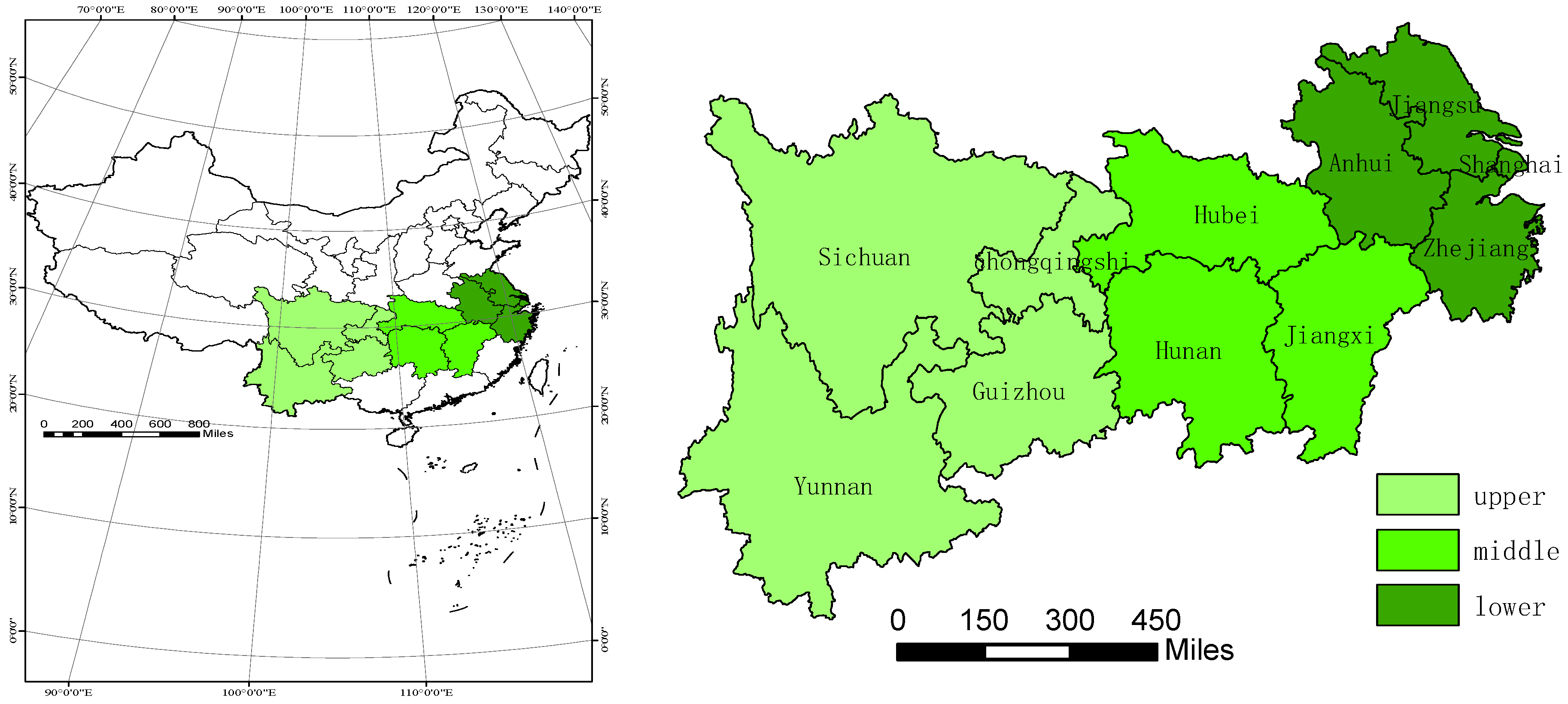

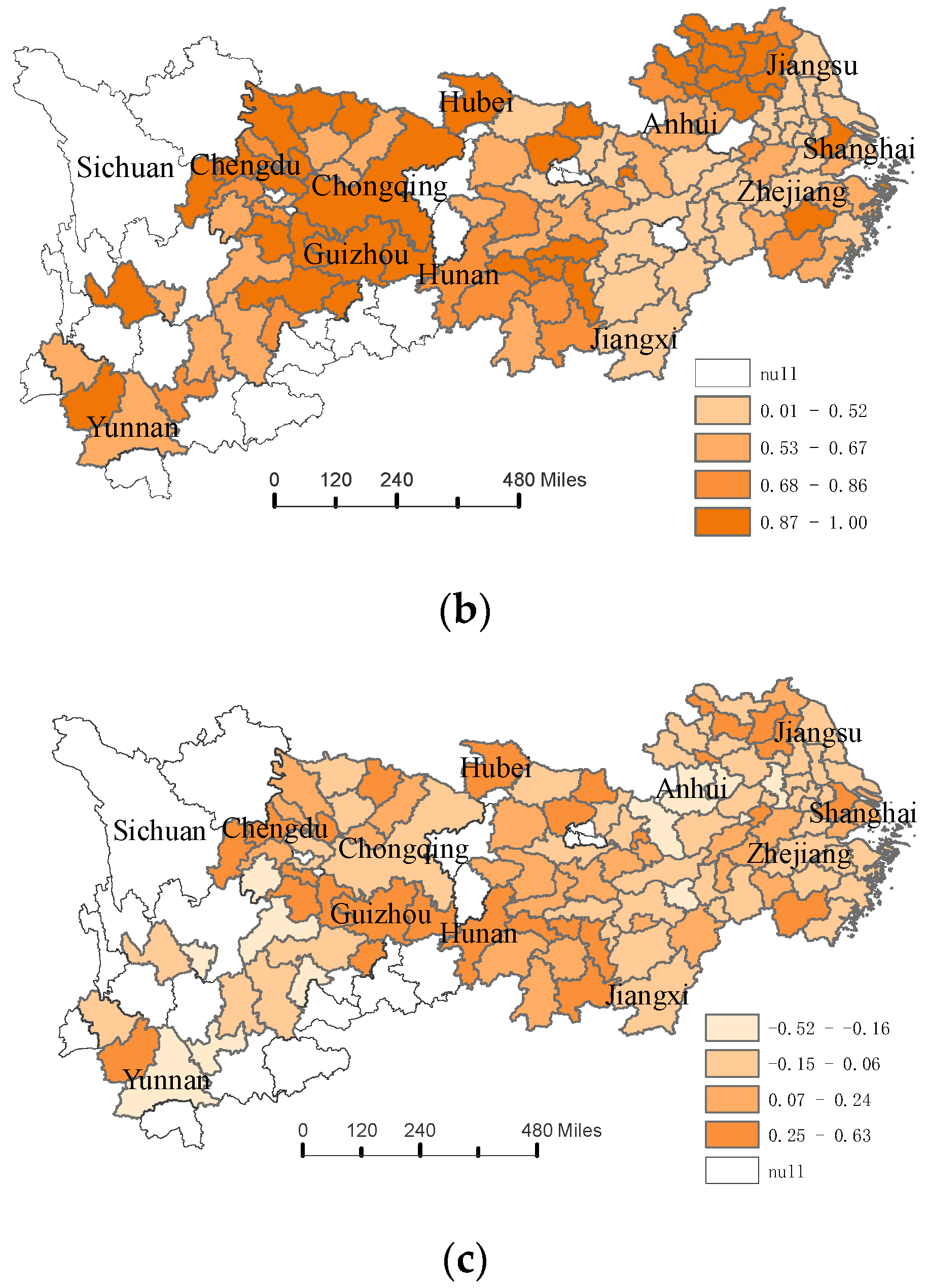
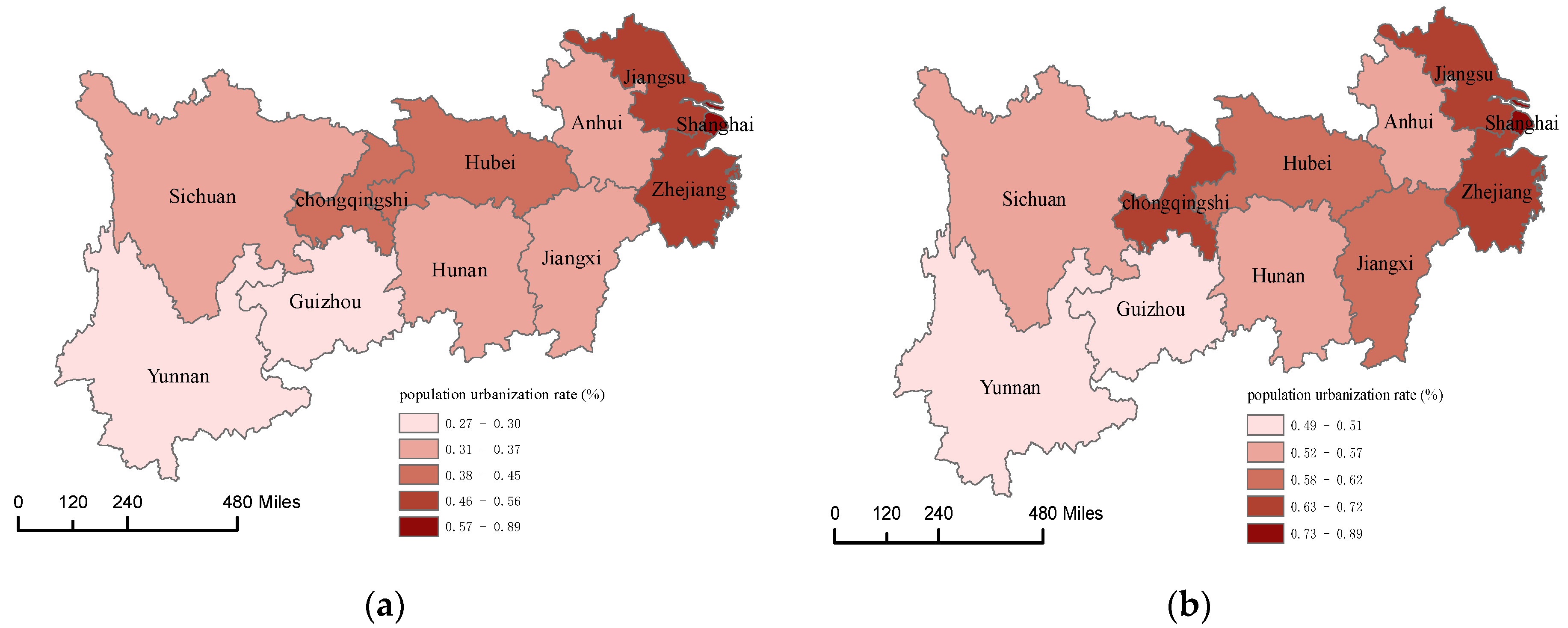
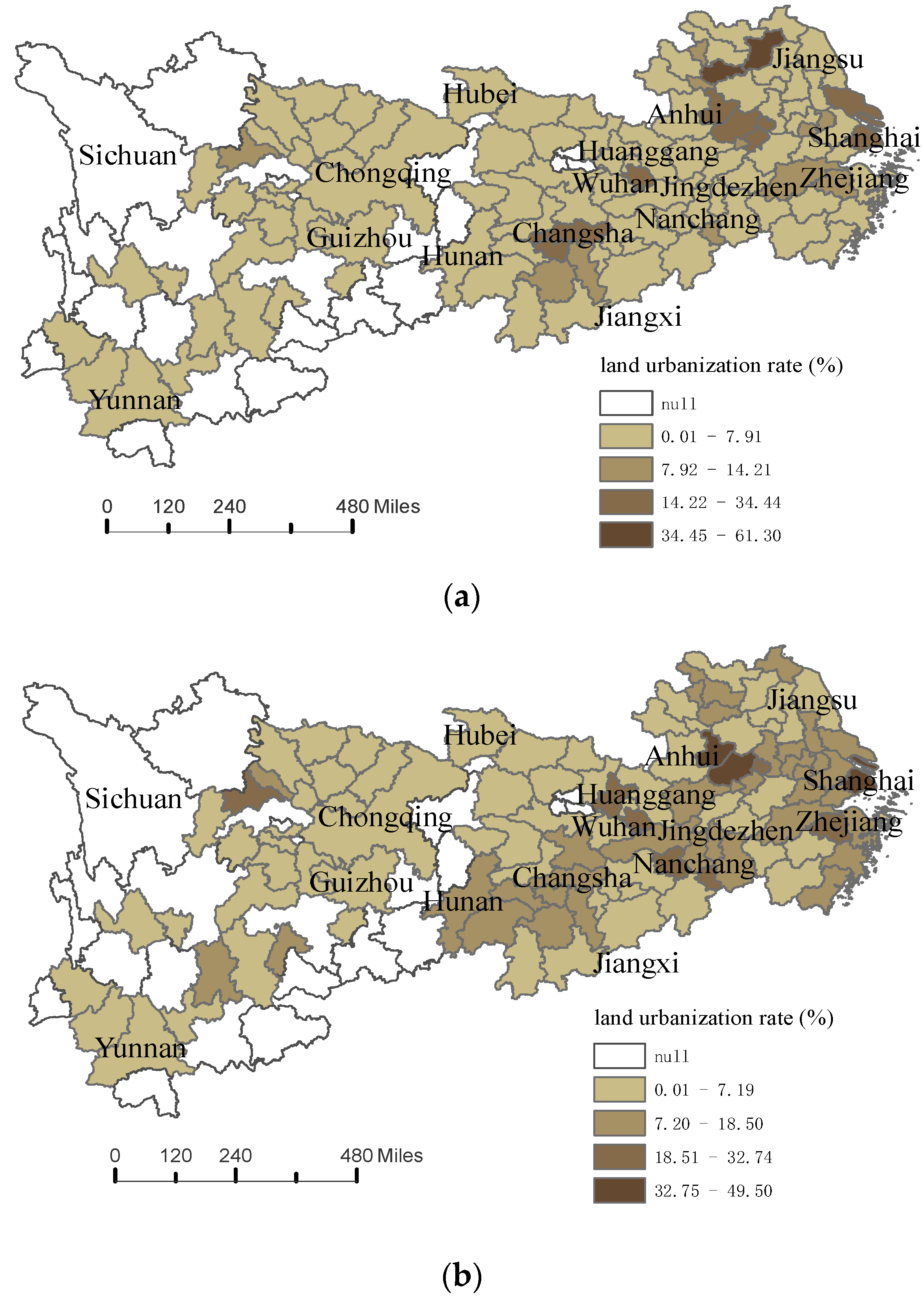

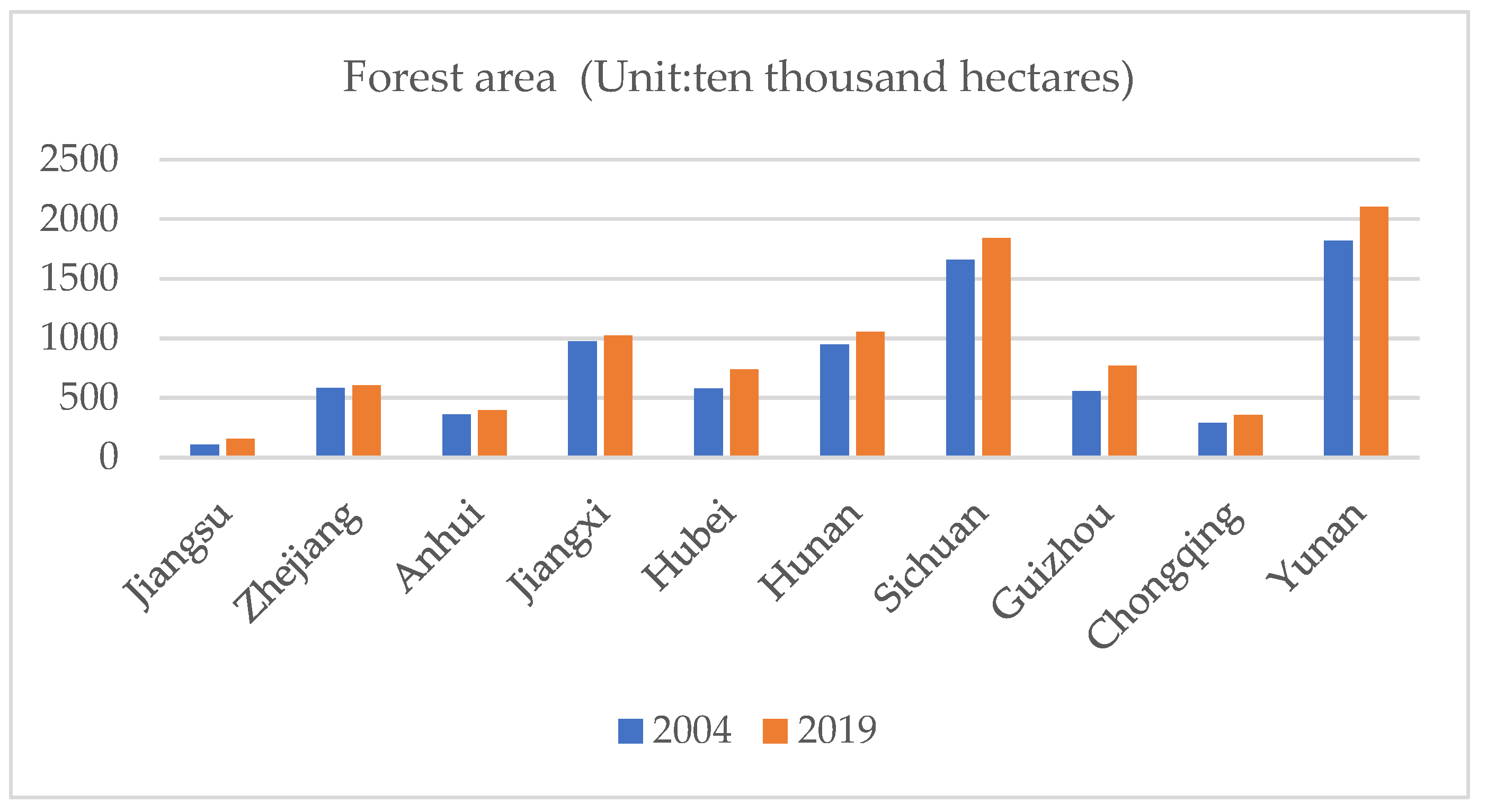
| Criteria | Indicator | |
|---|---|---|
| Input indicators | Labor force | Number of workers in the primary industry (Ten thousand) |
| Mechanica | Total power of farm machinery (Ten thousand kw) | |
| Fertilizer | Fertilizer application rate (Ten thousand tons) | |
| Land | Agricultural sown area (Thousand hectares) | |
| Output indicators | Expect output | Total grain production (Ten thousand tons) |
| Gross agricultural output value (Hundred million yuan) | ||
| Undesired output | Non-point source pollution | |
| Variable | Indicators |
|---|---|
| Cultivated land use efficiency (CLUE) | Measured by SBM-DEA |
| Population urbanization (UB1) | Urban population (million) |
| Land urbanization (UB2) | Proportion of urban construction land in urban area (%) |
| Economic development(EC) | GDP per capital (ten thousand yuan) |
| Effective irrigation rate (EI) | Ratio of irrigated area to cultivated area (%) |
| Multiple cropping index (MC) | Ratio of sown area to cultivated area (%) |
| Industrial structure (IS) | Proportion of added value of secondary and tertiary industries in GDP (%) |
| Methods | W1 | W2 |
|---|---|---|
| LM-lag test | 422.075 *** | 634.346 *** |
| R-LM-lag test | 17.828 | 0.62 |
| LM-err test | 2249.983 *** | 1200.408 *** |
| R-LM-err test | 1845.69 *** | 566.608 *** |
| Variables | I | z | p-Value |
|---|---|---|---|
| 2001 | 0.033 | 2.091 | 0.018 |
| 2002 | 0.08 | 4.393 | 0 |
| 2003 | 0.051 | 2.969 | 0.001 |
| 2004 | 0.081 | 4.458 | 0 |
| 2005 | 0.033 | 2.084 | 0.019 |
| 2006 | 0.14 | 7.359 | 0 |
| 2007 | 0.064 | 3.599 | 0 |
| 2008 | 0.048 | 2.821 | 0.002 |
| 2009 | 0.061 | 3.449 | 0 |
| 2010 | 0.095 | 5.131 | 0 |
| 2011 | 0.132 | 6.915 | 0 |
| 2012 | 0.16 | 8.294 | 0 |
| 2013 | 0.103 | 5.523 | 0 |
| 2014 | 0.119 | 6.274 | 0 |
| 2015 | 0.086 | 4.69 | 0 |
| 2016 | 0.072 | 3.986 | 0 |
| 2017 | 0.081 | 4.421 | 0 |
| 2018 | 0.091 | 4.912 | 0 |
| 2019 | 0.138 | 7.209 | 0 |
| (1) | (2) | (3) | (4) | |
|---|---|---|---|---|
| UB1 | UB1 | UB2 | UB2 | |
| UB | 0.1652 ** | 2.99 ** | −0.0832 ** | −0.0592 ** |
| (0.1613) | (2.4802) | (−1.0396) | (−0.7477) | |
| EC | 0.005 ** | 0.0022 ** | ||
| (−0.1471) | (−0.6618) | |||
| EI | −0.0279 | −0.0229 | ||
| (−0.9778) | (−0.8016) | |||
| MC | −0.0041 | −0.0015 | ||
| (−0.3273) | (−0.1158) | |||
| IS | 0.0086 *** | 0.0084 *** | ||
| (6.8693) | (6.6673) | |||
| lambda | 1.0648 *** | 1.2628 *** | 1.0129 *** | 1.0769 *** |
| (2.9323) | (3.4919) | (2.7826) | (2.9772) | |
| N | 2052 | 2052 | 2052 | 2052 |
| Adjust R2 | 0.53 | 0.525 | 0.5 | 0.533 |
| Robustness regression | ||||
| UB | 0.22 ** | 2.29 * | −0.11 ** | −0.09 ** |
| (−0.2096) | (1.9068) | (−1.3861) | (−1.1672) | |
| EC | 0.0031 ** | 0.0026 ** | ||
| (−0.3956) | (−0.7931) | |||
| EI | −0.0298 | −0.0281 | ||
| (−1.0357) | (−0.9766) | |||
| MC | −0.0014 | 0.0004 | ||
| (−0.1107) | (0.0307) | |||
| IS | 0.0083 *** | 0.0082 *** | ||
| (6.6031) | (6.4661) | |||
| lambda | 0.87 ** | 0.213 *** | 0.54 ** | 0.226 ** |
| (0.2003) | (0.4905) | (0.1245) | (0.5171) | |
| N | 2052 | 2052 | 2052 | 2052 |
| Adjust R2 | 0.53 | 0.542 | 0.52 | 0.540 |
| Lower | Middle | Upper | ||||
|---|---|---|---|---|---|---|
| UB1 | UB2 | UB1 | UB2 | UB1 | UB2 | |
| UB | 1.053 *** | 0.35 *** | −2.43 | −0.26 ** | −2.59 | 0.07 |
| (−7.6539) | (−4.0771) | (−1.5291) | −2.0635 | (−1.2318) | −0.1958 | |
| lambda | 2.1726 ** | 2.5082 ** | 2.1458 *** | 2.0753 *** | 5.0011 *** | 5.5245 *** |
| (2.2149) | (2.5131) | (4.4508) | (4.2686) | (3.0023) | (3.3430) | |
| N | 779 | 779 | 684 | 684 | 589 | 589 |
| Adjust R2 | 0.5146 | 0.681 | 0.513 | 0.35 | 0.64 | 0.601 |
Disclaimer/Publisher’s Note: The statements, opinions and data contained in all publications are solely those of the individual author(s) and contributor(s) and not of MDPI and/or the editor(s). MDPI and/or the editor(s) disclaim responsibility for any injury to people or property resulting from any ideas, methods, instructions or products referred to in the content. |
© 2023 by the authors. Licensee MDPI, Basel, Switzerland. This article is an open access article distributed under the terms and conditions of the Creative Commons Attribution (CC BY) license (https://creativecommons.org/licenses/by/4.0/).
Share and Cite
Feng, X.; Gao, J.; Sriboonjit, J.; Wang, Z.; Liu, J.; Sriboonchitta, S. The Impact of Urbanization on Cultivated Land Use Efficiency in the Yangtze River Economic Belt in China. Agriculture 2023, 13, 666. https://doi.org/10.3390/agriculture13030666
Feng X, Gao J, Sriboonjit J, Wang Z, Liu J, Sriboonchitta S. The Impact of Urbanization on Cultivated Land Use Efficiency in the Yangtze River Economic Belt in China. Agriculture. 2023; 13(3):666. https://doi.org/10.3390/agriculture13030666
Chicago/Turabian StyleFeng, Xiuju, Jian Gao, Jittaporn Sriboonjit, Zhongmin Wang, Jianxu Liu, and Songsak Sriboonchitta. 2023. "The Impact of Urbanization on Cultivated Land Use Efficiency in the Yangtze River Economic Belt in China" Agriculture 13, no. 3: 666. https://doi.org/10.3390/agriculture13030666
APA StyleFeng, X., Gao, J., Sriboonjit, J., Wang, Z., Liu, J., & Sriboonchitta, S. (2023). The Impact of Urbanization on Cultivated Land Use Efficiency in the Yangtze River Economic Belt in China. Agriculture, 13(3), 666. https://doi.org/10.3390/agriculture13030666






